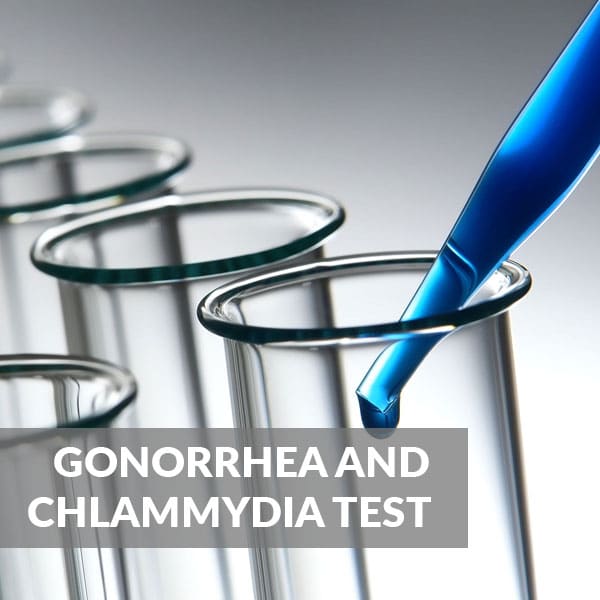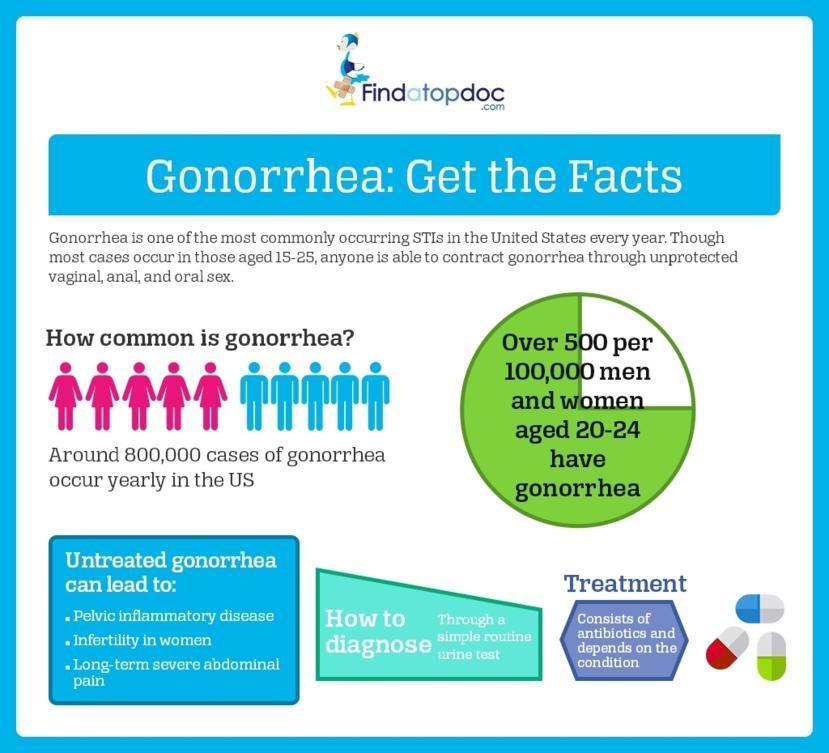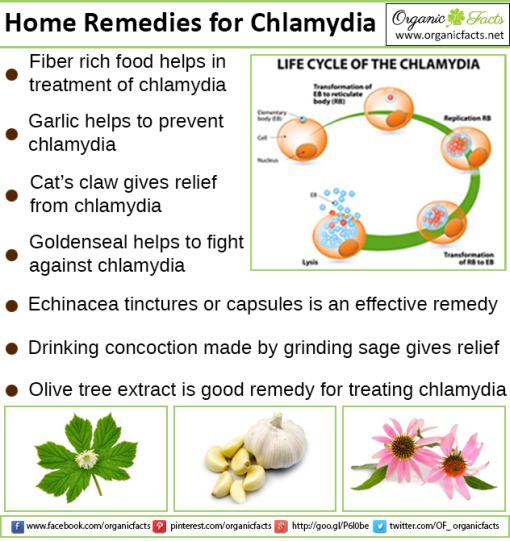Why Take The Chlamydia And Gonorrhea Test
The Chlamydia and Gonorrhea tests are the best methods to screen and effectively diagnose an active infection. They also help monitor the effectiveness of a treatment path. If positively diagnosed, you are expected to repeat the test three months after completing the treatment. Most doctors opt for a combined test in order to have the right diagnosis and elimination tool.
For both sexually transmitted diseases, people who are at high risk of contracting any of these infections need to get tested routinely. Risk factors include being sexually active and under the age of 25 years, having numerous sex partners, not regularly using condoms, having a previous chlamydia or gonorrhea infection, being a drug addict, having a sex partner who have STD, as well as being HIV positive. Men who have sex with men are also at high risk of becoming infected. Having an early diagnosis can help prevent any complications arising from these infections.
Complications caused by untreated chlamydia or gonorrhea include:
Other complications witnessed by infected men are lymphadenitis, balanitis, urethral stricture, or fistula. To prevent these complications from arising and affecting the quality of your life, you have to be tested routinely and address the problem, effectively.
Where To Get Tested
There are several different places you can go to be tested for gonorrhoea:
- a sexual health clinic
- your GP surgery
It’s possible to buy a gonorrhoea test from a pharmacy to do yourself at home. However, these tests vary in accuracy, so it’s recommended that you go to your local sexual health service.
All tests are free through the NHS, but you’ll have to pay if you go to a private clinic.
If you go to your GP practice, you may have to pay a prescription charge for any treatment.
What Happens If Chlamydia Goes Untreated For 2 Years
In most cases, chlamydia symptoms will occur within weeks of exposure. Chlamydia symptoms usually appear within one to three weeks after being infected. They can range in severity levels.
If chlamydia goes untreated for 2 years, it may lead to damage to the reproductive system.
Chlamydial infections in women may spread to the uterus or fallopian tubes and cause pelvic inflammatory disease which may damage the fallopian tubes and uterus and cause chronic pain, infertility, and ectopic pregnancy. Women who have chlamydia also are at much greater risk for becoming infected with HIV. In men, complications from chlamydia are rare.
Don’t Miss: Can A Man Have No Symptoms Of Chlamydia
This Test Will Tell You Whether Or Not Your Reproductive Or Urinary System Has Been Infected With Chlamydia Or Gonorrhea
Like any Everlywell STI test, our at-home Chlamydia & Gonorrhea Test is delivered in discreet packaging and taken in the privacy of your own home. Once you return your test sample to our lab and your sample is processed, youâll be notified via email when your results are ready. You will then be able to access your results through an easy-to-understand report on our secure online platform.
How Long Should I Wait Before Getting An Sti Test

The incubation period for chlamydia is 7 to 21 days. If youve had sex with someone whos positive, or if youve had a sexual encounter with a new partner, your results can be detected within the incubation period.
Its recommended to get tested 3 months after treatment to make sure youre in the clear.
Dont Miss: Azithromycin 500 Dosage For Chlamydia
Read Also: How Long Can Chlamydia Last Untreated
How Is Gonorrhea Treated
Health care providers treat gonorrhea with an antibiotic. It is given as a shot in the doctors office. It is important to get tested again 3 months after treatment to make sure the infection is cured .
All sexual partners from the past 2 months need treatment too, even if they dont have signs of gonorrhea.
If someone still has symptoms after treatment, they may need treatment with different antibiotics. Or they may have been infected with gonorrhea again.
You should not have sex again until:
- at least 7 days after you and your sexual partner take the antibiotics
- you and your sexual partner do not have signs of gonorrhea
People can get gonorrhea again if:
- Their partners arent treated.
Also Check: What Is The Difference Between Chlamydia And Gonorrhea
Chlamydia And Gonorrhea: How To Know The Difference
04.Feb.2021
Chlamydia and gonorrhea are arguably some of the most common, and well known, sexually transmitted infections worldwide. As a matter of fact, the Centers for Disease Control and Prevention refer to both of these infections as two nationally notifiable STIs .
Occasionally mistaken for one another, chlamydia and gonorrhea have similar symptoms and signs, and can even cause some similar side effects when left untreated. In saying that, both chlamydia and gonorrhea are individual infections, with a variety of distinct differences â each of which is worth knowing more about.
You May Like: Side Effects To Chlamydia Medication
Recommended Reading: What Is The Difference Between Chlamydia And Gonorrhea
How Does Evidence Fit With Biological Understanding
Chlamydial and gonococcal infections are often asymptomatic in women. Untreated infections may progress to PID-related complications such as chronic pelvic pain, ectopic pregnancy, or infertility. Infections may also be transmitted to sex partners and newborn children. Accurate screening tests and effective antibiotic treatments are available for chlamydia and gonorrhea.
In men, gonococcal infections are more commonly symptomatic compared with women. Serious complications from infection are less common in men.
Studies on assessing risk and for whom screening may be most effective are a high priority.
The CDC recommends annual chlamydia and gonorrhea testing in all sexually active women younger than 25 years and in older women at increased risk of infection . It also recommends screening for both infections in pregnant women younger than 25 years and in older pregnant women at increased risk for infection during their first prenatal visit and again during their third trimester if risk remains high.16
The American Academy of Family Physicians follows the 2014 USPSTF chlamydia and gonorrhea screening recommendations.58 The American Academy of Pediatrics recommendations align with the CDC guidelines.59
Treatments For Gonorrhea And Chlamydia
Since both STDs are caused by a bacterial infection, the treatment is a regimen of oral antibiotics.
Some strains of gonorrhea in the US have become antibiotic resistant, sometimes called super gonorrhea. Therefore, a medical physician will decide on the best course of antibiotics.
The most commonly recommended antibiotics for both chlamydia and gonorrhea are:
The infection should clear after one to two weeks.
You should never stop taking antibiotics until the recommended course is finished, even if you think the infection cleared or you are feeling better.
If you do not finish the antibiotics, the infection can come back and be resistant to the antibiotics you were taking.
Additionally, since antibiotic resistant strains of bacteria are already more common, if your symptoms continue after a few days of taking antibiotics, consult your doctor. They may switch you to a different strain of antibiotics.
Some people report home remedies for chlamydia and gonorrhea easing their symptoms, but the only effective treatment for both STDs are antibiotics.
Gonorrhea and chlamydia are curable by taking the appropriate medication as directed however, repeat infections are common.
You and your sexual partner should always be tested after three months of completing treatment, especially if you are unsure whether your partner received treatment.
Read Also: How Much Is The Pill For Chlamydia
Don’t Miss: What Happens If You Keep Getting Chlamydia
What Is Gonorrhea
Gonorrhea infections, caused by the bacterium Neisseria gonorrhoeae, can be usually be cured with medication, however cases of antibiotic drug resistance are being seen . It infects both men and women. Gonorrheal infection affects the genitals, rectum, and even throat. It is very common especially among young people within the age of 15-24 years.
What Are The Long
Experts used to think that a one-time chlamydia or gonorrhea infection didnt have any big impact on someones health and life. More recently, they found out that its not the case. Women who test positive for chlamydia, for example, are at risk for several different reproductive problems, and that risk remains throughout 17 years of follow-up, which is way longer than the previously estimated 1 year only. Gonorrhea too can cause irreversible damage. So what are those risks?
Also Check: How To Treat Chlamydia Conjunctivitis
Read Also: How To Cure Chlamydia In Throat
What Does The Test Measure
Gonorrhea testing detects evidence of infection with the bacteria Neisseria gonorrhoeae. There are several types of gonorrhea tests:
- Gonorrhea nucleic acid amplification testing: NAAT testing detects the genetic material of the gonorrhea bacteria and is considered the optimal test for gonorrhea infection. This type of test can be performed on a urine sample or a swab taken from a site of potential infection.
- Gram stain: Gram stains look for certain types of cells that are characteristic of a gonorrhea infection under a microscope. This test is performed on urethral swabs and is used primarily in men who are experiencing urinary symptoms.
- Gonococcal culture: Gonococcal cultures attempt to grow the gonorrhea bacteria from swabs taken from sites of potential infection. Cultures are the only tests that detect the infections susceptibility to antibiotics. Doctors may order a gonococcal culture if they suspect that a patient has an antibiotic-resistant strain of gonorrhea.
- Rapid gonorrhea tests: While rapid testing for gonorrhea isnt common, several tests are being developed to allow health care professionals to give same-day gonorrhea testing results.
Should You Get Tested For Chlamydia And Gonorrhea

Higher-risk behavior includes engaging in sexual activity with multiple partners, drug use and practicing sexual activities with any person which havent received a negative result from a test, as being involved in previous sexual activities.
If you suspect that you may have been infected with Chlamydia, testing is the way to go.
Considering the harsh outcomes of leaving a chlamydia infection untreated, as well as the ease and price of todays testing options, theres absolutely no reason to remain in the dark.
You May Like: Can You Tell If You Have Chlamydia
Chlamydia Symptoms & Treatment
FAST FACTS
- Chlamydia is a sexually transmitted infection that is normally passed on through sex without a condom or sharing sex toys with someone who has the infection.
- Using male or female condoms and dental dams during sex will help to protect you from getting chlamydia.
- Chlamydia is often symptomless however if left untreated it can lead to long-term health problems.
- Chlamydia is easily treated with antibiotics.
- Chlamydia can be passed on from mother to child during pregnancy, so its important for pregnant women to get tested.
What Can Cause False Results
The incubation period of chlamydia is normally between one to five days so, getting tested too early after a high-risk sexual encounter, may show a false negative result. Also, a positive result may reflect an old infection, in that case, we can call it a false positive since the results do not indicate an active infection.
The incubation period of gonorrhea is normally between two to six days however it can range anywhere from one to fourteen days. So, getting tested before that time will not give accurate results. It is always recommended to get tested after the incubation period has passed to prevent a false negative test, otherwise you would be advised to take the test again.
Don’t Miss: Does Chlamydia Cause Stomach Pain
What Are Chlamydia And Gonorrhea
While these chlamydia and gonorrhea infection signs can be noticeable within a couple of weeks post-infection, many people do not show any symptom. So, they will become an infection reservoir, capable of spreading the contamination in the community. It is really not very easy to identify these two infections only from their signs and symptoms. For Chlamydia, it is reported that 75% of infected women and 50% of infected men, do not show any symptoms. For Gonorrhea, 30 to 40% of women do not show symptoms. This makes these two STDs spread more extensive and problematic.
Im Pregnant How Does Chlamydia Affect My Baby
If you are pregnant and have chlamydia, you can pass the infection to your baby during delivery. This could cause an eye infection or pneumonia in your newborn. Having chlamydia may also make it more likely to deliver your baby too early.
If you are pregnant, you should get tested for chlamydia at your first prenatal visit. Testing and treatment are the best ways to prevent health problems.
You May Like: How Can I Treat Chlamydia Without Going To The Doctor
How To Test For Chlamydia
- Register your kit online. Use the unique ID included inside your kit and go to www.everlywell.com/register. Write your date of birth and the sample collection date on the transport tube provided by the kit.
- Collect your sample by urinating into the specimen collection cup thatâs included with the kit.
- Use the pipette to place the sample into a transport tube, and put the tube into the biohazard bag .
- Place the bag into the shipping envelope , apply the prepaid shipping label, and place your envelope in the mail. Your sample will then arrive at a laboratory, where it will be analyzed for chlamydia and gonorrhea.
- Just days later, youâll be notified that your results are ready. You can privately view your results online on our secure platform.
What Are The Treatments For Chlamydia
Antibiotics will cure the infection. You may get a one-time dose of the antibiotics, or you may need to take medicine every day for 7 days. Antibiotics cannot repair any permanent damage that the disease has caused.
To prevent spreading the disease to your partner, you should not have sex until the infection has cleared up. If you got a one-time dose of antibiotics, you should wait 7 days after taking the medicine to have sex again. If you have to take medicine every day for 7 days, you should not have sex again until you have finished taking all of the doses of your medicine.
It is common to get a repeat infection, so you should get tested again about three months after treatment.
You May Like: Are Chlamydia And Gonorrhea Curable
What Does A Chlamydia Infection Look Like
Although few, some of the visible signs of chlamydia in females include:
- Cervical inflammation and bleeding: the infection can cause inflammation at the cervix and make the outer portion of the cervix look red, a condition called cervicitis. This would only be visible if a health care provider examines you.
- Discharge: some of the signs you have chlamydia also includes a change in vaginal discharge. Youll notice more discharge than usual, and it may be yellowish or even bloodstained, that may have an odor.
- Swelling during a pelvic exam: sometimes, during your pelvic exam, your doctor might discover tenderness within the pelvis, especially on touching the cervix. They may also detect swelling of the tubes and ovaries.
How Does A Chlamydia And Gonorrhea Test Work

Screening for chlamydia and gonorrhea can be done at home or at a clinic. A sample of urine is typically sent to a laboratory, which checks the urine for chlamydia and gonorrhea DNA. If you are using the Everlywell at-home test, youâll receive secure, online results just a few days after the lab receives your sample.
Learn more:How to test for gonorrhea
Recommended Reading: Can You Get Chlamydia If You Use A Condom
How Do The Symptoms Compare
Both men and women can get chlamydia or gonorrhea and never develop any symptoms.
With chlamydia, symptoms may not appear for a few weeks after youve contracted the infection. And with gonorrhea, women may never experience any symptoms at all or may only show mild symptoms, while men are more likely to have symptoms that are more severe.
A couple of the most telltale symptoms of these STIs overlap between the two , such as:
- burning when you pee
- abnormal discharge from the rectum
- pain in the rectum
- bleeding from the rectum
You may also develop symptoms that affect your throat if you engage in oral sex with someone who has one of these conditions. This can cause mouth and throat symptoms, including sore throat and a cough.
What Would Cause A False Positive Chlamydia Test
It may be positive with only tiny amounts of DNA present. This could be either by contamination for example from the glove of the doctor or nurse who took the swab, or because something other than chlamydia has interlinked with the DNA segment, and given a positive result although this is probably very rare.
Donât Miss: Signs And Symptoms Of Gonorrhea And Chlamydia
Don’t Miss: Azithromycin One Dose For Chlamydia
Many People With Gonorrhea Do Not Have Symptoms
Given the long list of symptoms above, you may expect it would be easy to know if you have gonorrhea, but roughly 10-15% of infected men and 80% of infected women experience no symptoms at all. When women do experience symptoms, they are often mild enough to be confused for a bladder or vaginal infection. People with no symptoms often go undiagnosed, placing them at risk for developing complications and for unknowingly spreading the infection to partners.
Im Pregnant How Does Gonorrhea Affect My Baby
If you are pregnant and have gonorrhea, you can give the infection to your baby during delivery. This can cause serious health problems for your baby. If you are pregnant, it is important that you talk to your health care provider so that you get the correct examination, testing, and treatment, as necessary. Treating gonorrhea as soon as possible will make health complications for your baby less likely.
Don’t Miss: Chlamydia And Pregnancy First Trimester